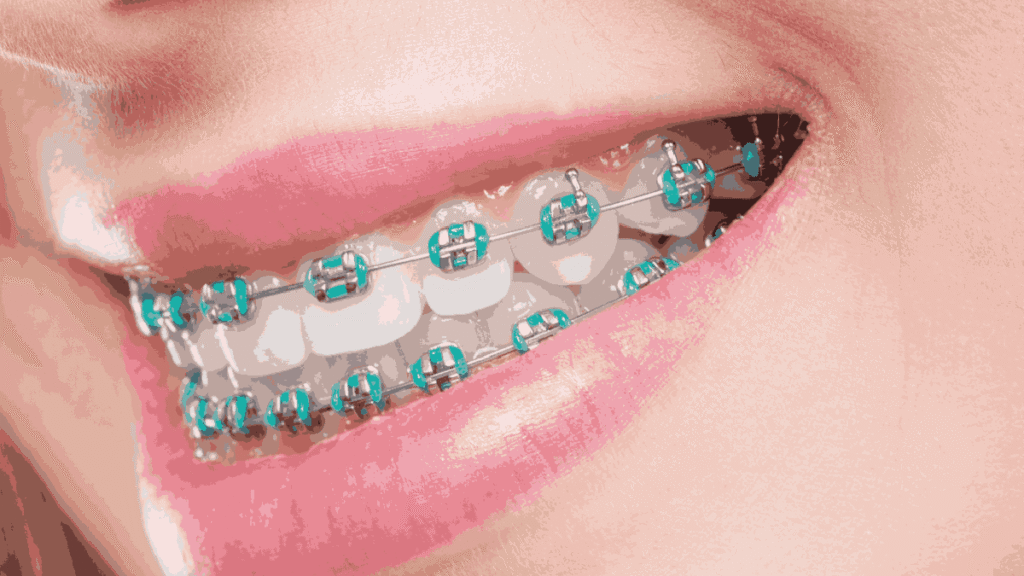Introduction: Understanding the Real Cost of Braces in 2025
Braces are no longer just a teenage milestone — they’ve become a popular choice for adults seeking a confident, straight smile. But one question always comes up first: how much are braces? The truth is, there’s no single answer. The cost of braces can vary significantly depending on several factors — including the type, your location, your dental condition, and whether you opt for insurance or payment plans.
In this article, we’ll break down everything you need to know about the cost of braces in 2025. We’ll explore different types, average price ranges, hidden costs, and how you can make smart, affordable choices. Whether you’re a parent planning for your child or an adult looking to fix your bite, this is your go-to guide to understanding how much are braces and what you’re really paying for.
How Much Are Braces? The Quick Answer
The cost of braces in 2025 ranges from $2,500 to $8,000+, depending on the type and complexity of treatment. Here’s a general breakdown:
| Type of Braces | Average Cost (USD) | Visibility | Maintenance | Treatment Duration |
|---|---|---|---|---|
| Metal Braces | $2,500 – $6,000 | Visible (traditional) | High | 18–36 months |
| Ceramic Braces | $3,000 – $7,000 | Less visible | Moderate | 18–36 months |
| Lingual Braces | $5,000 – $8,500 | Hidden behind teeth | High | 24–36 months |
| Invisalign (Clear Aligners) | $3,000 – $7,500 | Virtually invisible | Low | 12–24 months |
Factors That Influence the Cost of Braces
The answer to “how much are braces” depends on several core factors:
1. Type of Braces
As seen above, traditional metal braces tend to be the most affordable, while lingual braces are often the most expensive due to customization and labor.
2. Location and Provider
Orthodontic care costs vary widely by region. Urban areas typically have higher rates due to clinic overheads. Also, an experienced orthodontist may charge more than a general dentist offering braces.
3. Complexity of Case
Mild alignment issues cost less than complex jaw or bite corrections. Cases needing surgery or multiple phases of treatment also increase costs.
4. Treatment Duration
The longer you need braces, the more adjustments and visits are required — which increases the cost.
5. Insurance Coverage
Some dental insurance plans cover part of the orthodontic treatment, especially for children. However, adult braces are often only partially covered or excluded altogether.
Types of Braces Explained
Understanding the pros and cons of each option helps you make a smart financial decision:
1. Metal Braces
- Pros: Most affordable, very effective for all cases
- Cons: Highly visible, can be uncomfortable
- Cost: $2,500–$6,000
2. Ceramic Braces
- Pros: Less visible, effective
- Cons: Can stain, slightly more fragile
- Cost: $3,000–$7,000
3. Lingual Braces
- Pros: Hidden from view, customized
- Cons: Most expensive, difficult to clean, may affect speech
- Cost: $5,000–$8,500
4. Invisalign (Clear Aligners)
- Pros: Removable, discreet, comfortable
- Cons: Requires discipline, may not suit severe cases
- Cost: $3,000–$7,500
Are Braces Worth the Price?
While the costs may seem high, orthodontic treatment is a long-term investment in your health and confidence. Here’s why:
- Improved Oral Health: Correctly aligned teeth are easier to clean, reducing the risk of cavities and gum disease.
- Better Digestion: Properly aligned teeth help chew food better.
- Speech Improvements: Fixes lisping and other speech issues caused by misaligned teeth.
- Self-Confidence: A straight smile can improve your self-image and social interactions.
Cost Comparison Chart: What You Get for What You Pay
| Category | Metal | Ceramic | Lingual | Invisalign |
|---|---|---|---|---|
| Cost | $2,500–$6,000 | $3,000–$7,000 | $5,000–$8,500 | $3,000–$7,500 |
| Aesthetic Appeal | Low | Medium | High | Very High |
| Comfort | Moderate | Moderate | Low | High |
| Maintenance Effort | High | Moderate | High | Low |
| Duration | Long | Long | Long | Medium |
| Suitability for Complex Cases | High | High | High | Moderate |
Payment Plans and Insurance: Making Braces Affordable
1. Dental Insurance
Most policies cover 25–50% of braces costs for children. For adults, insurance rarely covers more than a portion, unless medically necessary.
2. Payment Plans
Orthodontists often offer monthly installment plans with low or zero interest. This helps break down the cost over 1–3 years.
3. FSA/HSA Accounts
Using pre-tax dollars from your Flexible Spending Account (FSA) or Health Savings Account (HSA) can save hundreds on treatment.
4. Discount Plans
Some dental savings plans offer reduced rates on braces and other dental services through membership.
Common Hidden Costs of Brace
When calculating how much are braces, it’s important to factor in potential extra costs:
- Initial Consultation: $100–$300 (sometimes waived)
- X-rays and Imaging: $150–$500
- Retainers Post-Treatment: $200–$1,000
- Emergency Visits/Repairs: $50–$150 per visit
- Teeth Cleaning Before/After: $100–$300
FAQs About Brace
1. How long do I have to wear brace?
Most people wear braces for 18 to 36 months, depending on the severity of misalignment.
2. Are brace painful?
You may experience soreness or tightness after adjustments, but modern brace are far more comfortable than older models.
3. Can adults get brace too?
Yes! Adults of all ages can benefit from brace, and many choose Invisalign for its discreet appearance.
4. What happens if I don’t wear my retainer?
Your teeth can shift back to their original position. Retainers are essential for maintaining results.
5. Can I eat everything with brace?
Avoid hard, sticky, or chewy foods with metal or ceramic braces. Invisalign wearers can eat normally after removing aligners.
Conclusion: What Should You Do Next?
So, how much are braces really? While the upfront cost may seem steep, the long-term benefits — improved oral health, confidence, and function — make them a worthwhile investment. From traditional metal to invisible aligners, there’s an option to fit every need and budget.
Before committing, consult a certified orthodontist for a personalized quote. Ask about payment plans, insurance coverage, and long-term follow-up. Remember, braces are more than just cosmetic — they’re a tool for better health and a brighter future.






